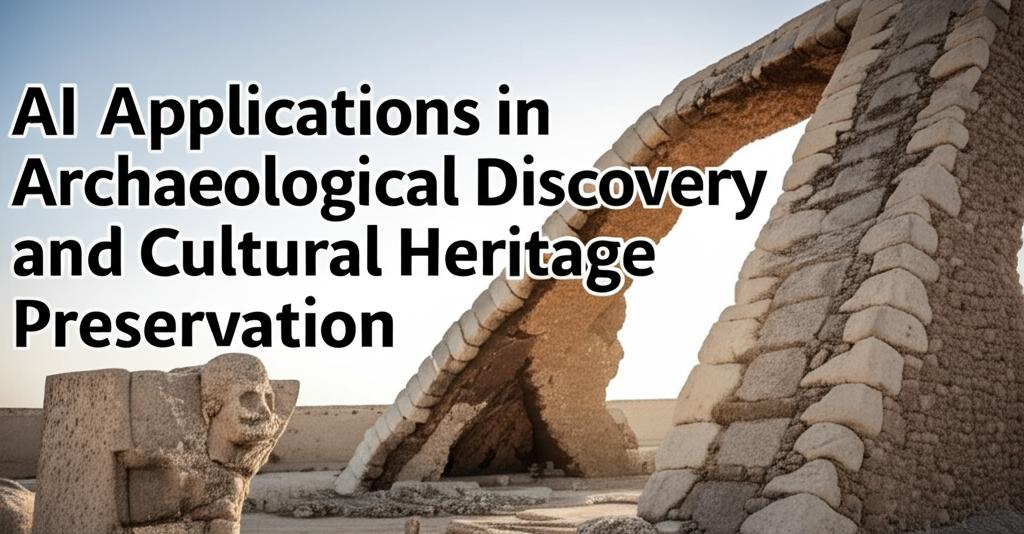Artificial intelligence (AI) is increasingly transforming the fields of archaeological discovery and cultural heritage preservation. By leveraging technologies like machine learning, computer vision, natural language processing, and advanced data analysis, AI offers powerful tools to uncover, interpret, and protect our shared human history.
Discovering the Past:One of the most significant impacts of AI in archaeology is its ability to identify new archaeological sites. AI algorithms can analyze vast datasets, including satellite imagery, LiDAR (Light Detection and Ranging) scans, and geographical information, to detect subtle patterns or anomalies that might indicate hidden structures or settlements. For instance, AI has been instrumental in identifying potential sites in vast or remote areas, such as uncovering thousands of previously unknown ancient Maya structures hidden beneath dense vegetation in the Yucatan Peninsula and discovering new geoglyphs in the Nazca region of Peru. Predictive modeling, fueled by geographical, environmental, and historical data, allows archaeologists to focus their survey efforts on the most promising locations, increasing the efficiency of discovery.
AI also plays a crucial role in artifact analysis. Machine learning models, particularly those using computer vision, can rapidly classify and analyze artifacts with remarkable precision. These systems can discern fine details, textures, and patterns in high-resolution images, helping to differentiate between similar items, classify them based on subtle visual features, and even piece together fragmented artifacts. This capability speeds up the analysis process, reduces human error, and can reveal connections and technological influences across different cultures and time periods. Furthermore, AI assists in material analysis by processing data from techniques like spectroscopy to determine the composition and provenance of ancient materials, offering insights into trade routes and ancient technologies.
Deciphering ancient texts and inscriptions is another area where AI is making significant strides. Deep learning models are being trained to restore damaged inscriptions, determine their origins, and date them with increasing accuracy, opening new avenues for historical research.
Preserving Cultural Heritage:AI offers innovative solutions for the preservation and restoration of cultural heritage. AI-driven 3D modeling, using data from photogrammetry and LiDAR, enables the creation of highly accurate digital reconstructions of sites and artifacts. These digital twins serve multiple purposes: they allow researchers to virtually explore and study ancient environments, assist in planning conservation strategies, and provide a means for digital restoration of damaged or lost elements.
Predictive analytics powered by AI can assess the condition of artifacts and heritage sites, identify risks of deterioration due to environmental factors or human activity, and recommend conservation strategies. By analyzing data from sensors monitoring temperature, humidity, and structural integrity, AI can help predict potential damage and prompt early intervention. For instance, AI can forecast corrosion in metal statues or identify structural weaknesses in ancient buildings.
Moreover, AI contributes to the democratization of cultural heritage. Virtual and augmented reality experiences, built upon AI-generated models and data, make historical sites and artifacts accessible to a global audience, fostering engagement and education. These technologies allow people to virtually tour ancient landscapes or examine artifacts in detail, regardless of their physical location.
Challenges and the Future:Despite its numerous benefits, the use of AI in archaeology and cultural heritage also presents challenges. Ethical considerations regarding the reconstruction of heritage, the potential for historical inaccuracies in AI-generated content, and questions of cultural ownership and data sovereignty are critical. Ensuring accuracy in representing cultural nuances and avoiding biases in AI models trained on limited or skewed data is also paramount.
The successful integration of AI requires interdisciplinary collaboration between archaeologists, cultural heritage experts, computer scientists, and data scientists. This collaboration is essential for developing AI tools tailored to the specific needs of the field and for ensuring that technological advancements are applied responsibly and ethically.
Looking ahead, the role of AI in archaeological discovery and cultural heritage preservation is expected to expand further. As AI technologies continue to evolve, they will undoubtedly unlock new insights into our past, enhance our ability to protect invaluable heritage, and offer innovative ways to share these treasures with future generations. Projects are already underway to create "digital twins" of heritage sites for enhanced monitoring and management, and AI-powered platforms are being developed to further streamline data analysis and site discovery. The continued development and thoughtful application of AI promise a richer, more accessible, and better-preserved understanding of human history.

